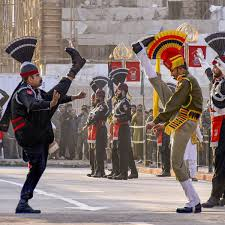🛕 Amritsar – A City Where Spirit and Soul Walk Hand in Hand
Day 1: The Golden Heart
You arrive in Amritsar, and it hits you at once—the aroma of ghee, the buzz of rickshaws, the call of the temple bells, and the warm "Sat Sri Akal" from strangers. The city is alive—loud, proud, and glowing with devotion.
Then you step through the main gate of Harmandir Sahib, the Golden Temple.
Everything else fades.
The hum of kirtan (devotional music) floats over the shimmering Sarovar (holy tank). The gold-covered sanctum, sitting like a jewel in the middle of water, reflects perfectly—both in the lake and in your heart.
You walk barefoot around the marble path, your head covered, your pace slowed not by rules, but reverence.
People of every religion and background sit together in silence. Some pray. Some cry. Some just listen.
You realize—this isn’t just a temple.
It’s a feeling. A stillness. A heartbeat.
Langar – The Meal That Humbles
At the Guru Ka Langar, you sit cross-legged on the floor with hundreds of others. Rich, poor, foreign, local—no one matters here.
Volunteers serve steaming dal, soft rotis, rice, and kheer—all made in one of the largest community kitchens in the world.
A boy no older than 12 gently places extra roti on your plate with a smile. No salary. No ego. Just sewa (selfless service).
It’s the most honest meal you’ve had in a long time.
Day 2: Echoes of Sacrifice – Jallianwala Bagh
Just a short walk away, behind unassuming walls, lies Jallianwala Bagh—the site of one of the darkest chapters in Indian history.
You stand in silence before the bullet-ridden wall. You touch the stone. You read the plaques. And you imagine what it must have been like on April 13, 1919, when General Dyer opened fire on thousands of peaceful Indians.
Even in the hustle of modern Amritsar, this place forces you to pause.
To remember.
To respect.
Day 3: Borderlines and Bravehearts – Wagah Ceremony
As the sun begins to dip, you head to the Wagah Border, where India meets Pakistan—not with tension, but with patriotism and pride.
Crowds fill the stadium. Flags wave. Loudspeakers roar. Then the Beating Retreat Ceremony begins.
Indian and Pakistani soldiers march with theatrical precision. The gates open. Hands salute. Feet stomp. And the air vibrates with “Vande Mataram!”, “Hindustan Zindabad!”
It’s dramatic, yes—but also symbolic. Despite everything, there's a strange unity in the divide.
On your way back, the quiet night road feels like a breath after thunder.
Day 4: A Morning of Faith, A Day of Flavour
You wake up early again, unable to resist another walk around the Golden Temple at sunrise. The water reflects a softer light now. Fewer crowds. More peace.
Later, you dive headfirst into Amritsar’s legendary food scene:
-
Amritsari Kulcha
—stuffed bread roasted in a tandoor, served with chana and dollops of butter. Makki di roti & Sarson da saa
- g—the true taste of Punjabi winters.
-
Jalebis, lassi, paneer tikka, and butter chicken—because restraint doesn’t exist here.
You don’t eat in Amritsar. You feast.
And then walk it off in the bustling Hall Bazaar, where the smell of spices mixes with the sound of bargaining aunties and blaring scooter horns.
Amritsar Is Not Just a City
It’s where devotion meets dignity, where history meets hope.
It’s in the footsteps of the barefoot devotees, the splash of holy water, the songs echoing through marble walls, and the spoons stirring giant pots in the langar kitchen.
Amritsar teaches you that faith doesn’t need to shout—it can serve quietly. That courage isn’t loud—it can stand still at a wall of bullet holes. And that love for your land can echo in stadiums and soup bowls alike.








Comments
Post a Comment